Amazing elephant – statues from Kailasa Temple, ellora caves Ancient india
In the state of Maharashtra, in India there lies a large breathtaking series of ancient archaeological structures known as the Ellora Caves. The Ellora Caves were used for various religious practices during ancient times, and are representative of religious acceptance and tolerance.
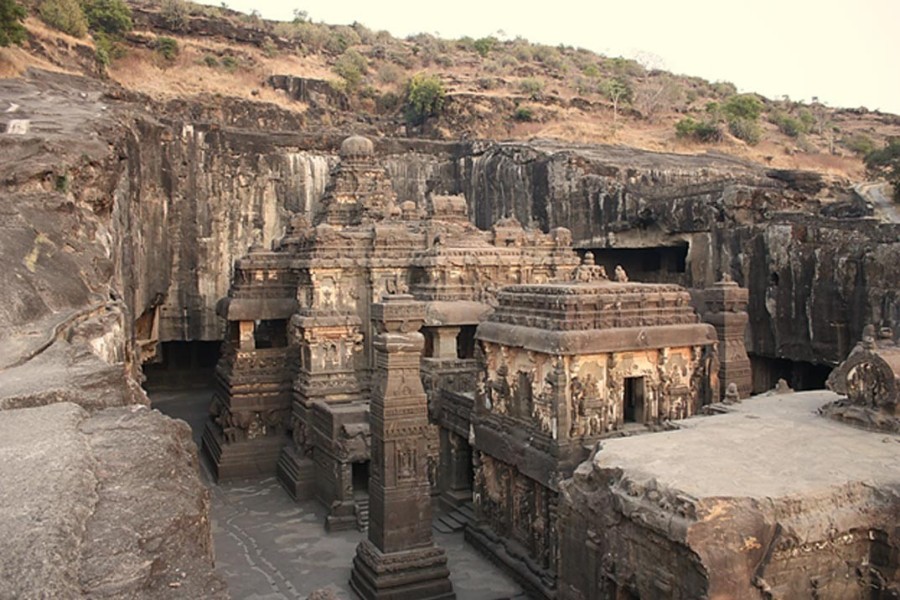
According to the Times of India the caves date back approximately 1500 years, yet they have remained surprisingly preserved from insects, natural conditions, and decay. Thanks to a recent study, scientists believe they have discovered the reason the caves are so well preserved – hemp. The study was conducted by former superintending archaeological chemist of the Archaeological Survey of India’s science branch, Rajdeo Singh, and a botany teacher from Dr. Babasaheb Ambedkar Marathwada University, MM Sardesai.
The exact time the caves were constructed is unknown, with estimates ranging from 200 BC through 1000 AD. Located in the Indian state of Maharashtra, the caves are comprised of 34 stunning stone temples that extend approximately 1.2 miles (1.93 km). The three main religions of India are represented by the Ellora Caves. Of the 34 stone temples, 17 represent Hinduism, 12 represent Buddhism, and 5 represent Jainism.
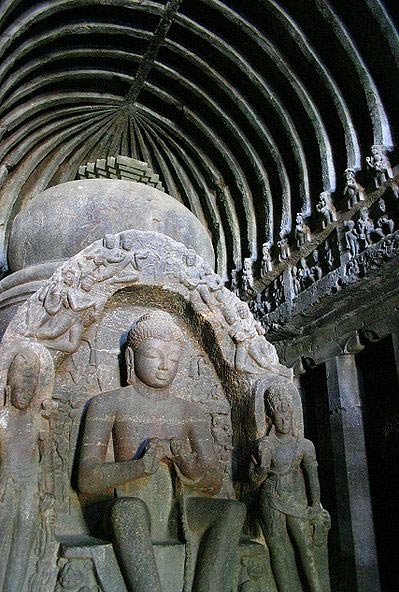
The Buddhist “Carpenter’s” cave (Cave 10). (Y. Shishido/CC BY SA 3.0)
The temples were artfully crafted, some reaching three stories high. The floors and ceilings were carefully fashioned to be level and smooth, showing that a great deal of effort and labor went into the creation of the temples.
- The magnificent Ellora Caves of India
- The Kailash temple at Ellora – preserving ancient wisdom for mankind
- Ten Amazing Caves of the Ancient World
Within each temple are beautiful paintings and stone carvings. “The caves are breathtaking examples of rock-cut architecture that stands testimony to the imagination and artistry of its creators,” report Singh and Sardesai in their article the journal Current Science (pdf).
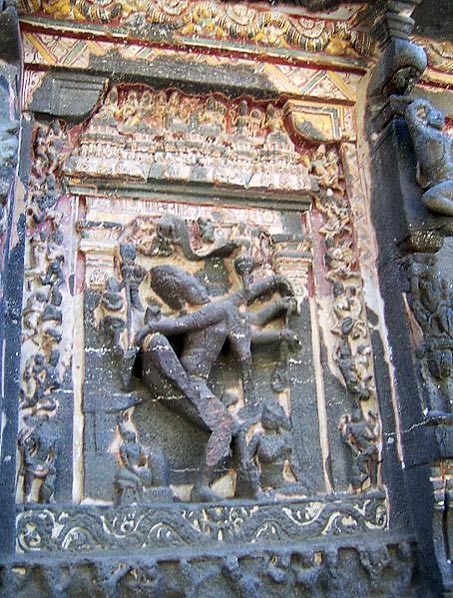
A panel showing the dancing Shiva from the Kailasha temple at Ellora (Cave 16). Much of the paint that once covered the entire temple is still visible in this image. (QuartierLatin1968/ CC BY SA 3.0)
The preservation of such a beautiful site, which is both historically and religiously significant, is a gift to modern society. By seeing and studying the structures and carvings one can learn more about the ancient people of India, and what they considered to be of religious importance.
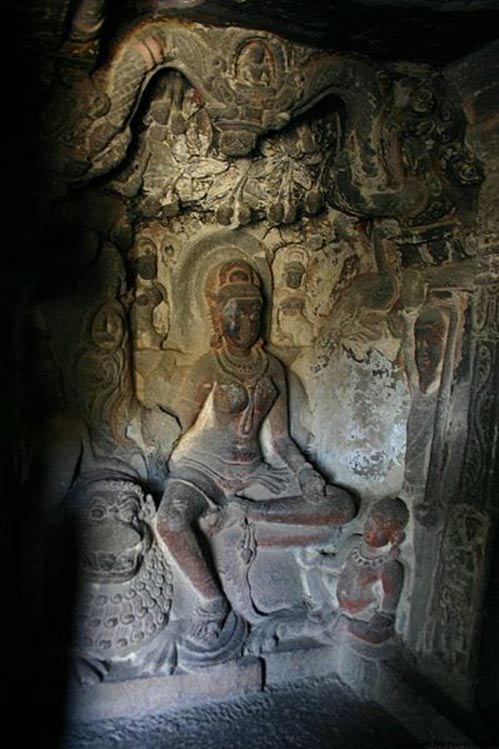
Carving of a yakshini at a Jain Cave at Ellora. (Y. Shishido/CC BY SA 3.0)
For example, one of the Hindu caves is believed to have been built by Rashtrakuta king, Krishna I, in dedication to the Hindu god Shiva. Such a structure would normally deteriorate over time. Natural elements such as heat, cold, precipitation, wind, humidity, and insects damage and tend to decay any exposed structure. However, those who created the Ellora Caves must have done something to preserve the caves from deterioration. Whether their actions were intended for preservation purposes, or for other reasons, may never be known.
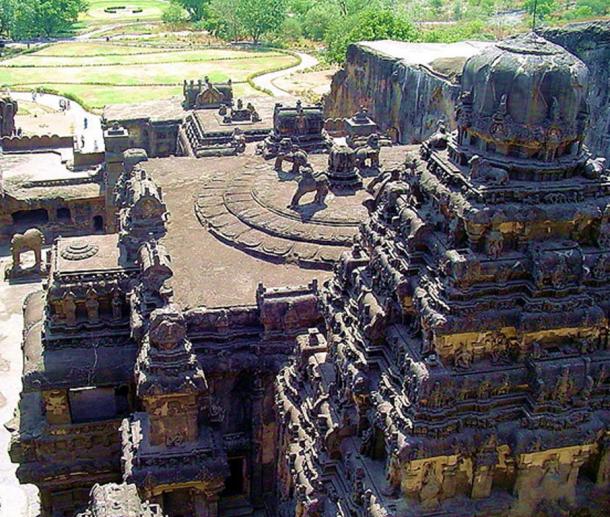
Ellora caves, Cave 16 – Kailasha Temple. Its construction is generally attributed to the 8th century Rashtrakuta king Krishna I. (Pratheepps/CC BY SA 2.5)
According to Singh, “[c]annabis sativa, popularly known as ganja or bhang, was found mixed in the clay and lime plaster at Ellora. This was confirmed by technologies such as scanning of the electron microscope, Fourier transform, infra-red spectroscopy and stereo-microscopic studies.” Singh and Sardesai explained the preservative qualities of the hemp mixture, as reported by Discovery. The cannabis fibers are more durable than other fibers, and the sticky quality of the cannabis could have helped to form a firm binder. Hemp can also regulate humidity, repel insects, as well as having high vapor permeability, hygroscopic properties.
- Shelters from the Storm: More Ancient Buddhist Caves Found in Mumbai
- The Historic Grottoes of Folx-les-Caves: Ancient Hideout and Traveler Waypoint
- The Wonderous Ajanta Caves

Small piece of clay plaster showing Cannabis fibers. (Singh and Sardesai)
Nevertheless, the use of the hemp plaster may have been for more than just preservation purposes. “As the hemp plaster has the ability to store heat, is fire-resistant and absorbs about 90 percent of airborne sound, a peaceful living environment for the monks has been created at Ellora Caves,” the researchers wrote.
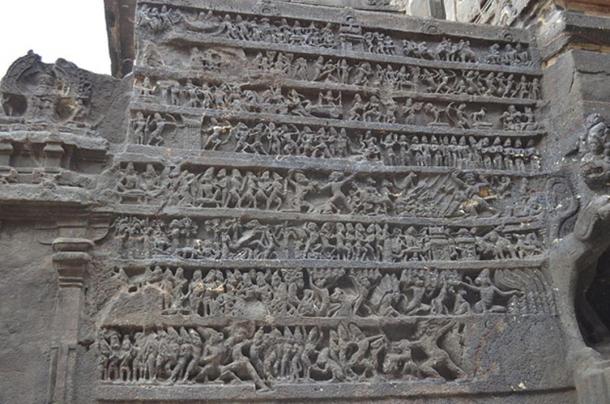
Inside Ellora Caves, Cave 16. (Ashwin Nair/ CC BY SA 3.0)
Prior to this study, it was believed that cannabis sativa could preserve buildings and structures for up to 600-800 years. The findings at Ellora show that cannabis sativa, with only 10% cannabis, can actually preserve for 1500 years or more.
While it may not ever be entirely clear why the monks and worshippers at the Ellora Caves created and used the hemp plaster, the resulting preservation has allowed modern scientists to study the area and learn more about those who constructed it and utilized it. This provides a great deal of information about India’s ancient civilizations, as well as beautiful ancient structures.
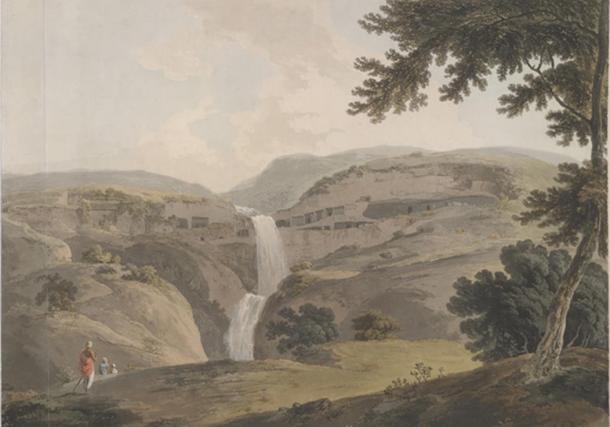
Painting of the mountain of Ellora. (1803) By Thomas Daniell. (Public Domain)
Featured Image: Ellora, cave 16, Kailasha Temple. Source: Arlan Zwegers/CC BY 2.0
By MRReese